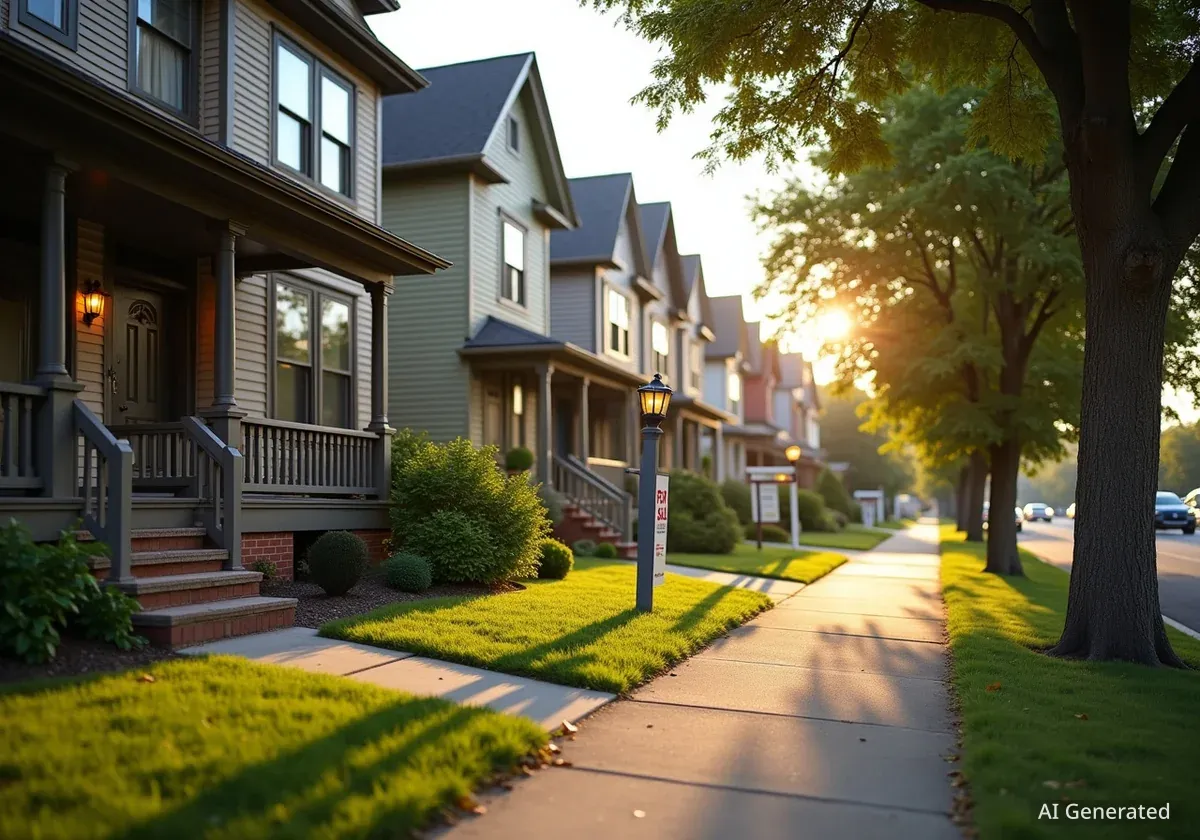While homeownership becomes an increasingly distant dream for many Americans facing soaring prices, Pittsburgh is emerging as a notable exception. With a median home price of just $229,000, the city stands in stark contrast to the national median of over $410,000, offering a rare pocket of affordability in a challenging real estate market.
Key Takeaways
- Pittsburgh's median home price is $229,000, significantly lower than the U.S. median of $410,800.
- A surplus of housing, including approximately 25,000 vacant properties, helps keep prices stable.
- Wages are strong relative to housing costs, supported by a diverse economy in healthcare, education, and technology.
- Proactive city initiatives aim to preserve affordability through redevelopment and homebuyer assistance programs.
A Tale of Two Markets
For many young adults, the prospect of buying a first home is daunting. In major coastal cities, median prices regularly approach the million-dollar mark, with Seattle at $762,000 and Los Angeles at $995,000. Yet in Pittsburgh, the story is different. Young professionals and families are finding that homeownership is not just possible, but practical.
Isaac Ray, 26, a professional ballet dancer, and Liam Weaver, 30, a grocery store deli manager, recently purchased their first home in the city's West End for $163,000. "A lot of people think about buying a house, and it just seems it’s something you probably can’t do," Weaver said, noting the stark difference from markets like Seattle, where similar properties cost five times as much.
This affordability is rooted in a simple economic principle: supply and demand. Following the decline of the steel industry decades ago, Pittsburgh was left with more houses than people. This historical context has created a unique market dynamic that benefits buyers today.
By the Numbers
In Pittsburgh, it is often cheaper to own a home than to rent. Zillow identified the city as one of only three in the U.S. where the gap between mortgage payments and rent is most favorable for buyers. Consequently, over 70% of residents are homeowners, exceeding the national rate by about five percentage points.
The Economic Foundation of Affordability
Pittsburgh's affordability isn't just about a surplus of old homes. The city has successfully transitioned its economy from heavy industry to a diversified base centered on healthcare, higher education, technology, and financial services. Major employers include the University of Pittsburgh and Carnegie Mellon University, which have helped foster a robust job market.
The local median household income is approximately $77,050. When combined with the low cost of housing, this creates a powerful affordability ratio. According to one analysis, a household earning the local median income could afford a home even if mortgage rates climbed to 9%. This level of financial resilience is nearly impossible in most other American cities.
This economic stability is attracting new investment. Companies like Mitsubishi, Nippon Steel, and Hitachi Energy have recently expanded their operations in the region, signaling confidence in its future. Real estate agent Brian Larson has seen a rise in remote workers moving to the area, stating, "They’re realizing I can work from home and have twice the home."
Challenges and Opportunities in an Older City
While the low prices are attractive, many available properties are older and require significant work. The city's housing stock largely consists of fixer-uppers, which helps keep initial purchase prices down but adds renovation costs for new owners.
Luke Revitsky, 34, recently bought a home for $215,000 that he knew needed extensive updates. "It needed a new roof. It needed new electric. … It hasn’t really been updated since the ’60s or ’70s," he explained, estimating at least $30,000 in necessary repairs. "There are a lot of houses that are outdated in Pittsburgh. It’s either super competitive, or it needs a lot of work."
Despite these challenges, some residents express concern that even in an affordable city, rising costs can still strain budgets. City council member Bobby Wilson noted that the issue is complex.
"We have this scenario where still, many low-income renters and working families are still priced out, because of the wages in Pittsburgh."
A City in Transition
At its peak in 1950, Pittsburgh's population was over 675,000. After the collapse of the steel industry, it declined significantly. Today, the population is around 308,000, but it has started to grow again, adding over 4,700 residents since 2020. This recent influx underscores the city's growing appeal.
Preserving an Affordable Future
City leaders are aware that Pittsburgh's affordability is a precious asset that could be threatened by its own success. To avoid the rapid price escalations seen in cities like Austin and Miami, officials are implementing a range of programs to manage growth and support homebuyers.
The Urban Redevelopment Authority (URA) is a key player in these efforts. It provides zero-interest loans to developers to convert vacant downtown office buildings into housing and offers financial incentives to include affordable units in new projects. "We’re that last money that the developer needs," said Quianna Wasler, who leads the authority.
Other initiatives include:
- First-Time Homebuyer Assistance: A program offering up to $90,000 to first-time buyers who earn up to 80% of the area's median income.
- Land Bank Program: This initiative acquires blighted properties, making them available for nonprofits to build new affordable housing.
- Zoning Changes: Recent legislation reduced minimum lot sizes to encourage the construction of denser, more varied housing types.
- Tax Abatements: In some new developments, property taxes are waived for up to 10 years to incentivize construction and sales.
Community leaders are focused on striking a delicate balance. "The thing we talk a lot about here is how we can get more growth, and within that, how we can maintain this affordability," said Stefani Pashman, CEO of the Allegheny Conference on Community Development. By learning from the experiences of other cities, Pittsburgh hopes to build a future where growth and accessibility can coexist.





